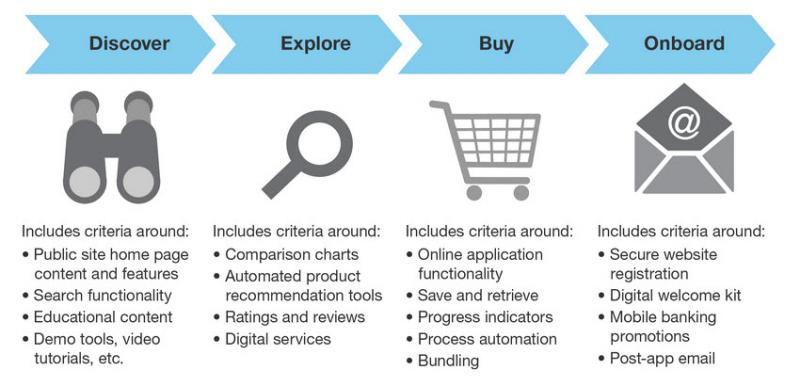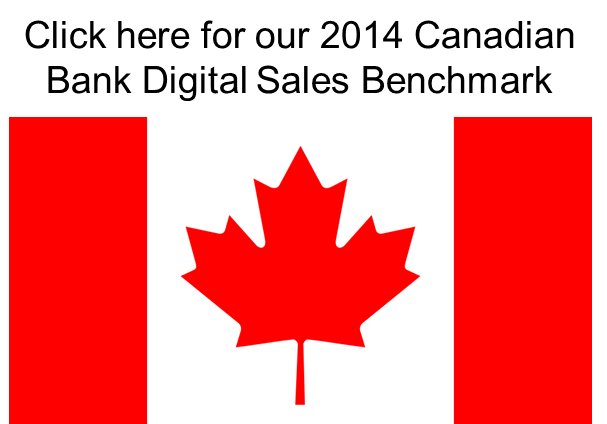Which Banks Lead In Digital Sales? Find Out Here
[This blog post was co-authored by Rachel Roizen]
Hot off the presses: We’ve just published our 2014 US and Canadian Bank Digital Sales Benchmark reports, in which we assess the public websites of the five largest retail banks in each country — as well as their mobile sites and downloadable apps for smartphones and tablets. Our benchmark looks at a range of criteria across four categories: discover, explore, buy, and onboard (see image below).
Read the full reports by clicking on the following links:
Here are some of the findings from the research:
- Bank of America narrowly edges out the competition to take the top US spot. For the second year in a row, Bank of America earns the highest overall score among the five largest retail banks. The firm excels by simplifying the online application process (it takes just a few minutes and guides the user with clear feedback and progress indicators) while supporting digital shoppers with chat and click-to-call options. At the same time, Bank of America enables easy cross-channel shopping for digital researchers who want to move offline to apply, with branch appointment scheduling available online.
- RBC Royal Bank again earns the highest overall score in Canada. RBC continues to offer robust features and content throughout the digital sales process. The bank is one of just two Canadian banks to let digital shoppers save and retrieve their application (TD Canada Trust is the other). RBC Royal Bank also provides excellent account comparison options and first-rate onboarding tools and content for new customers.
- Competition in both countries is heating up. The gaps between banks’ digital sales efforts are shrinking in both Canada and the US. For example, three American banks — U.S. Bank, Citi, and Wells Fargo — are within two points of Bank of America. In Canada, CIBC and TD Canada Trust both come within five points of RBC Royal Bank. Scotiabank earns the highest score in our “explore” category and offers excellent mobile tools for prospects. BMO, meanwhile, just overhauled its entire public site using responsive web design.* There’s no reason to think these trends will change any time soon, as banks across North America are targeting the growing contingent of consumers who shop for financial products through digital touchpoints.
- Successful firms will organize around customer journeys, not products. Digital banking teams should design around customer journeys, rather than product silos. Today, this is sorely lacking: For example, none of the banks we reviewed does enough to merchandise financial products based on prospects’ recent life events — even though those are the No. 1 driver of financial product purchasing. Digital teams at leading banks should experiment with options like product recommendation tools that can be bundled based on life events.
We encourage you to read the reports and let us know your thoughts!
*Note: BMO’s redesign came after our review period, so its score in this benchmark does not reflect those changes.
The image below shows the benchmarking categories we used:



